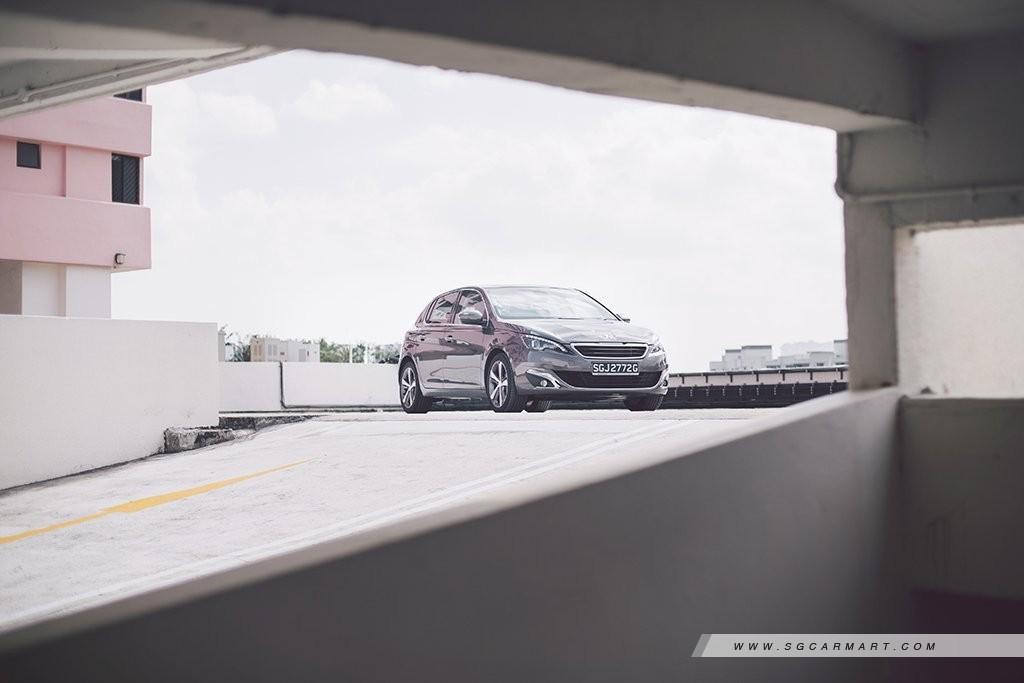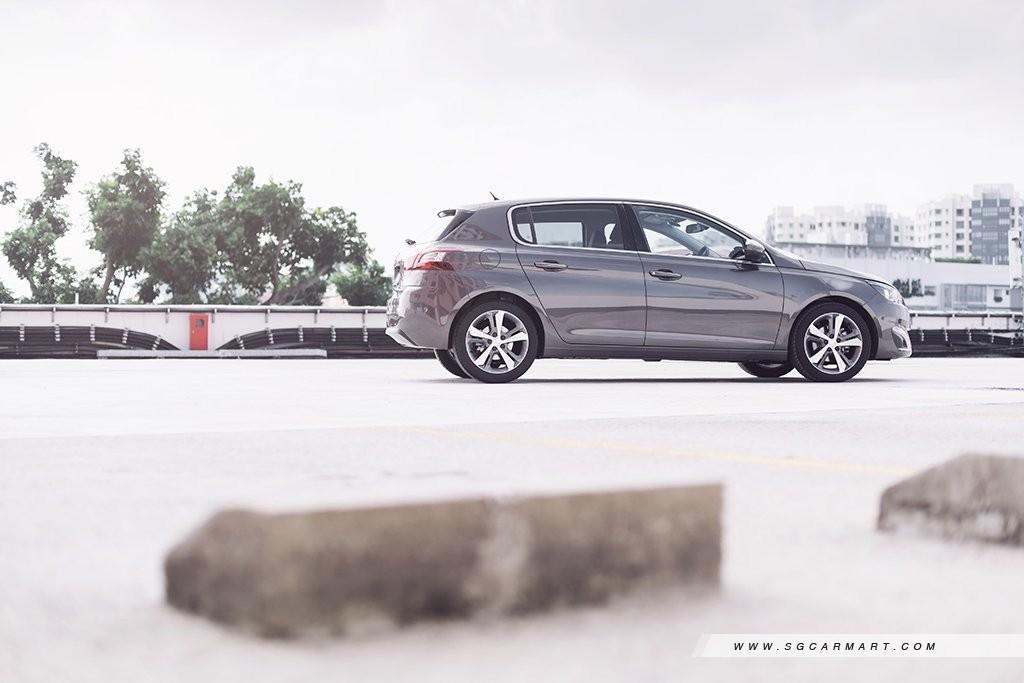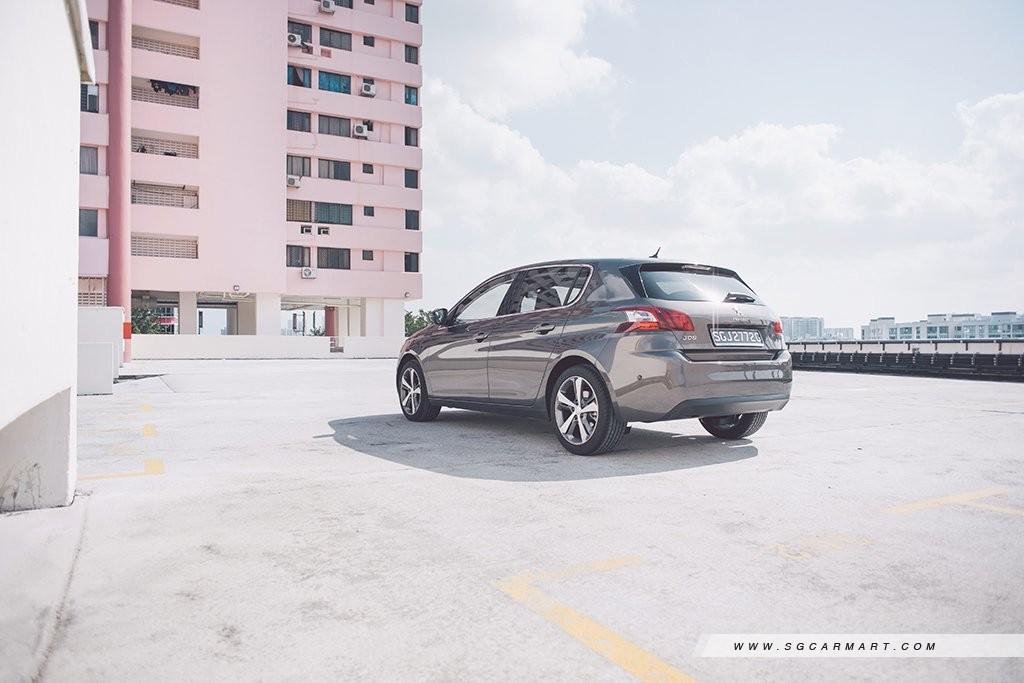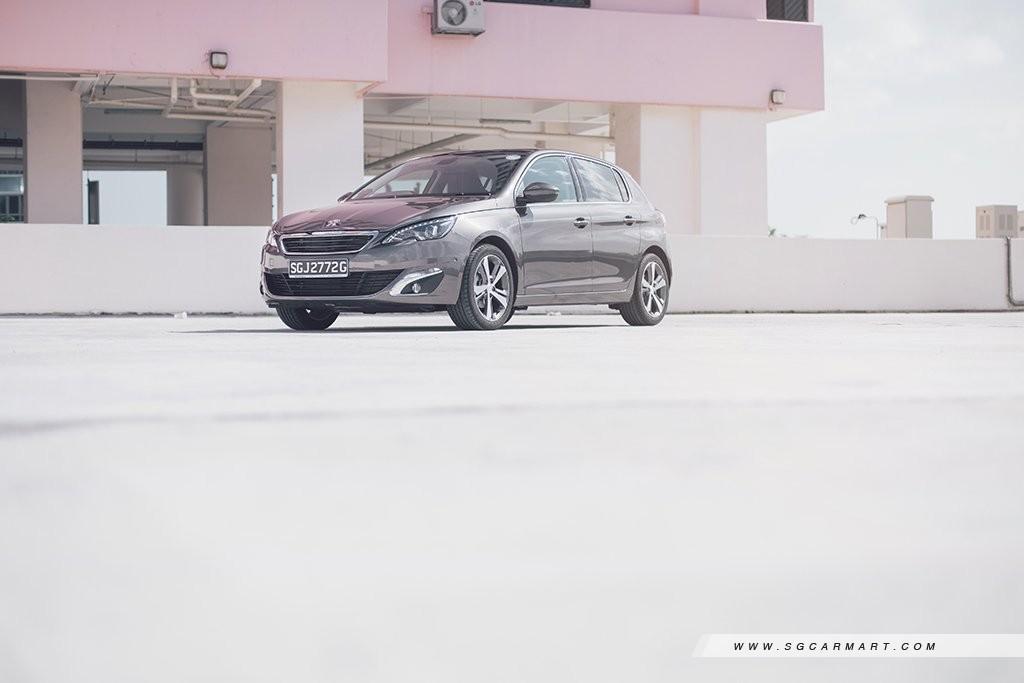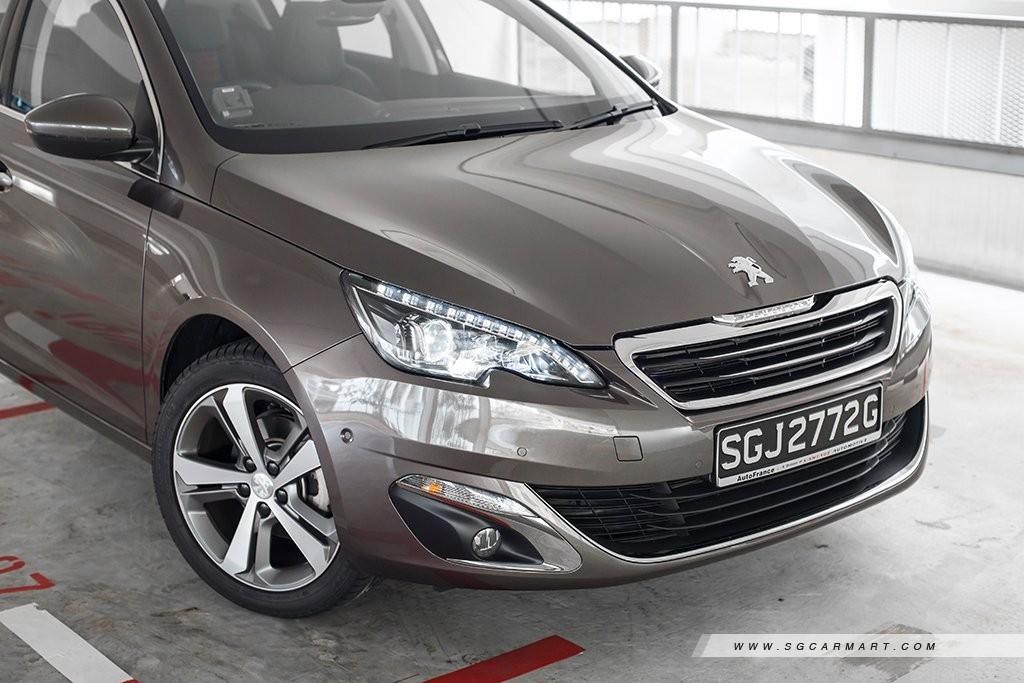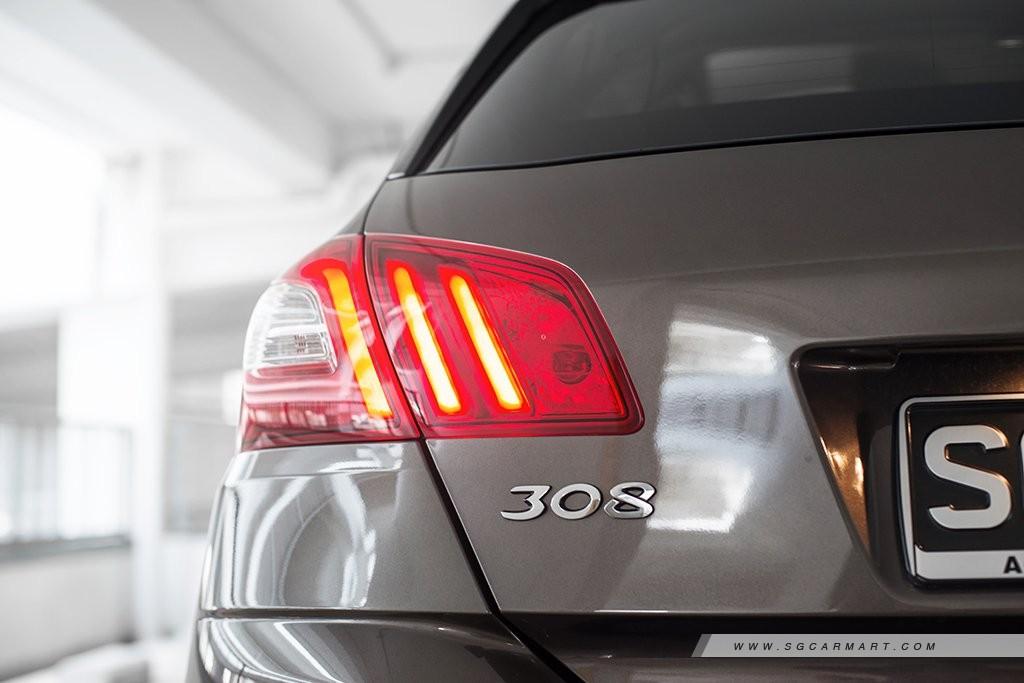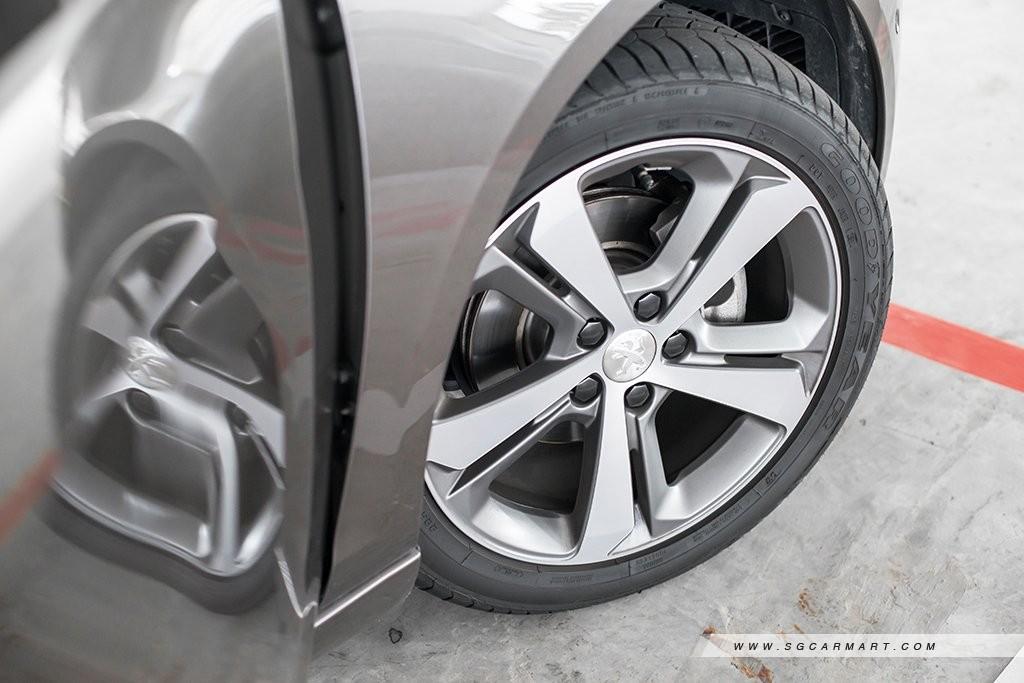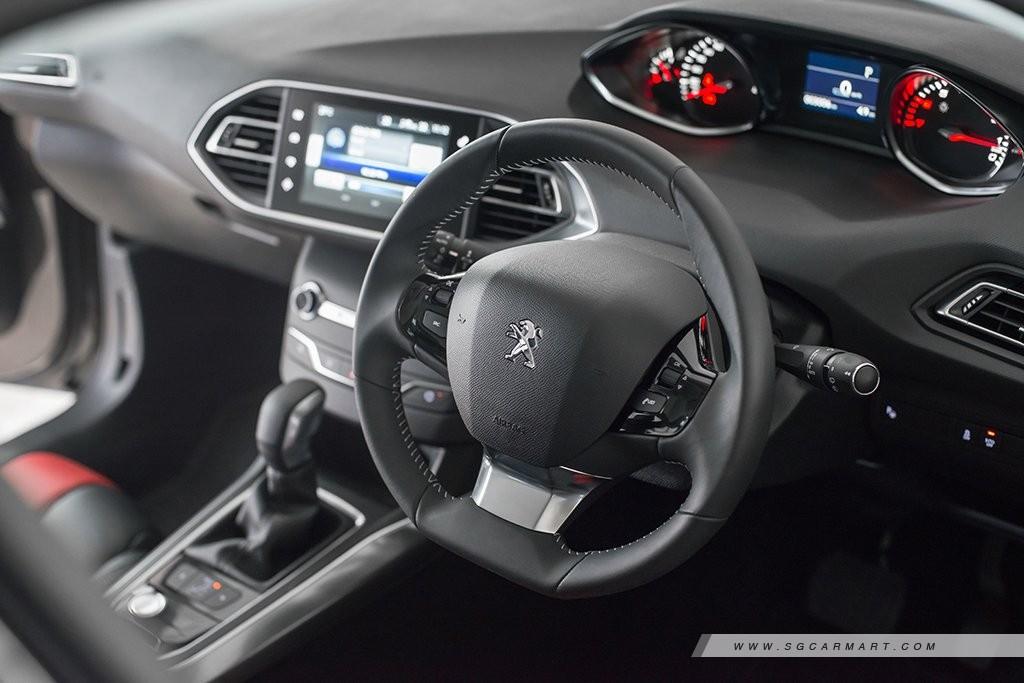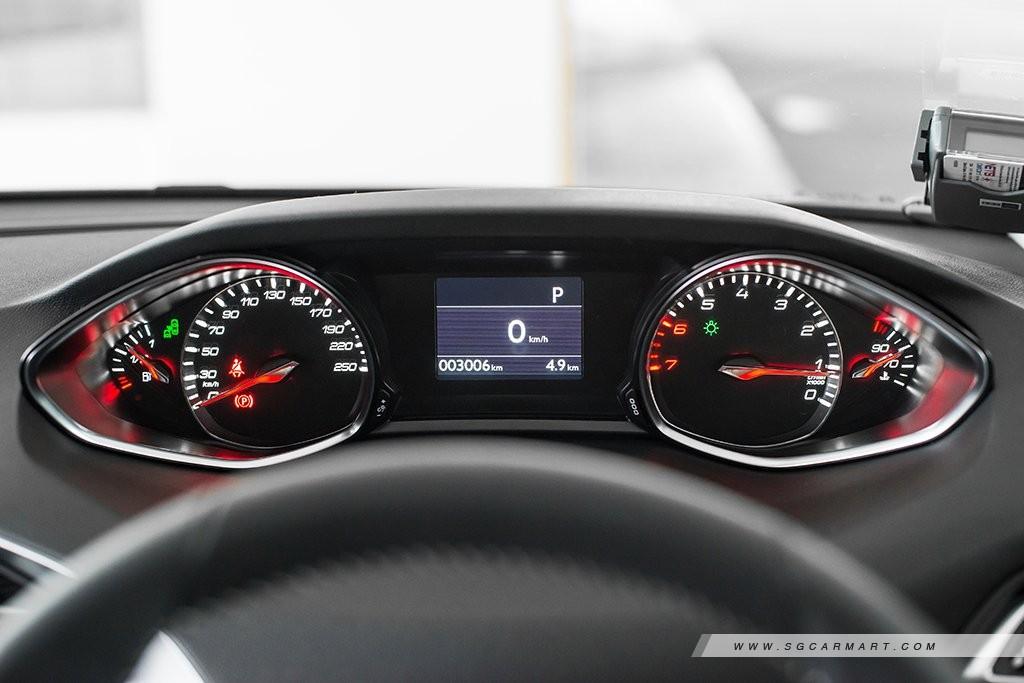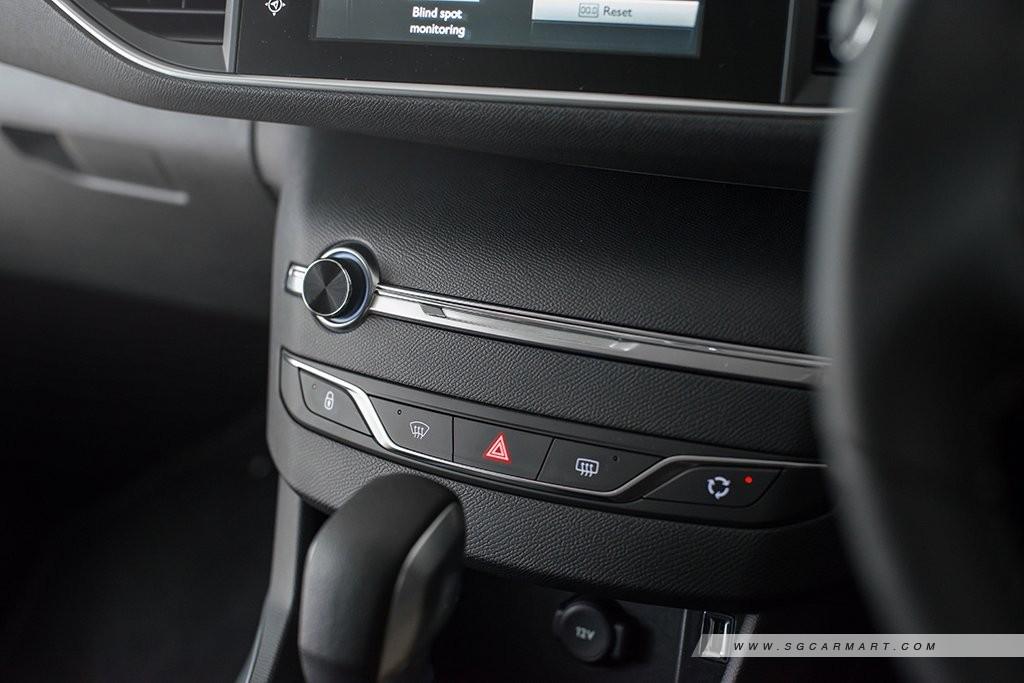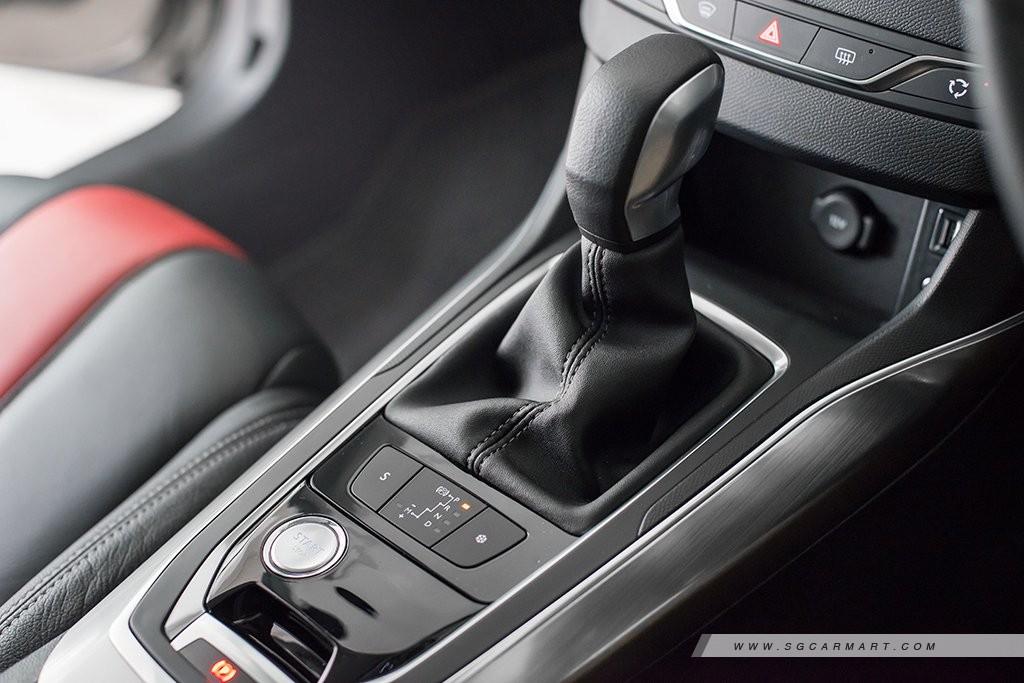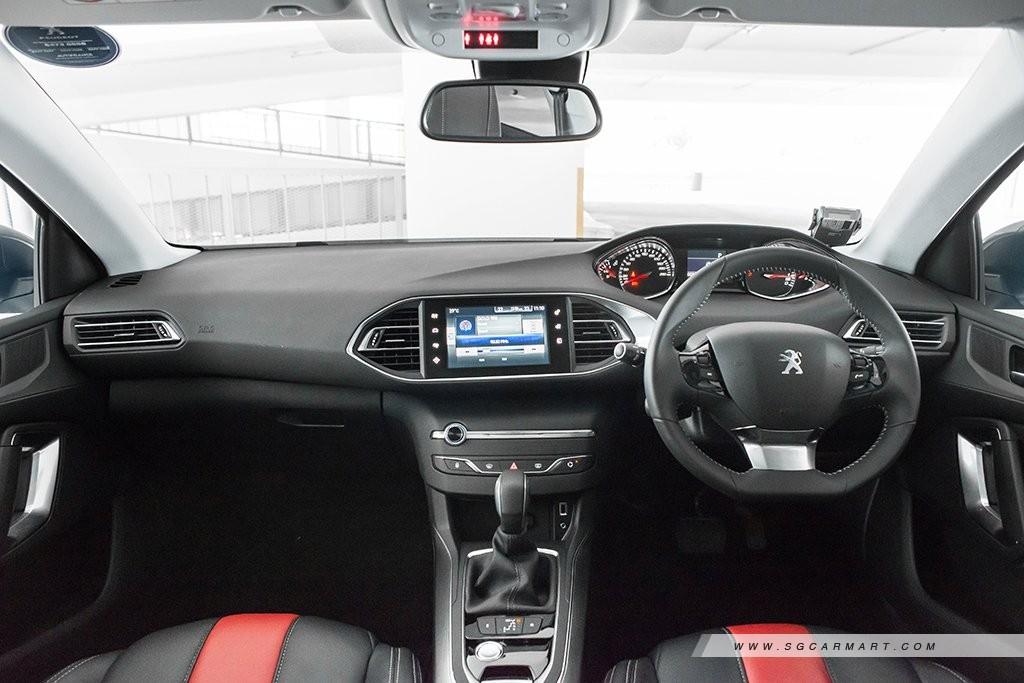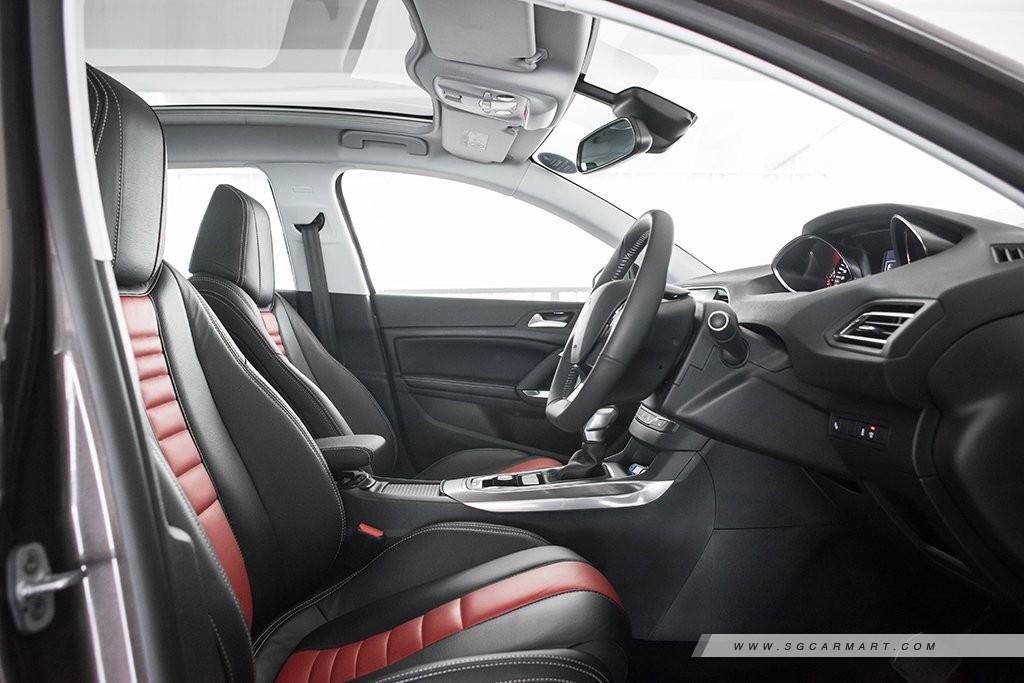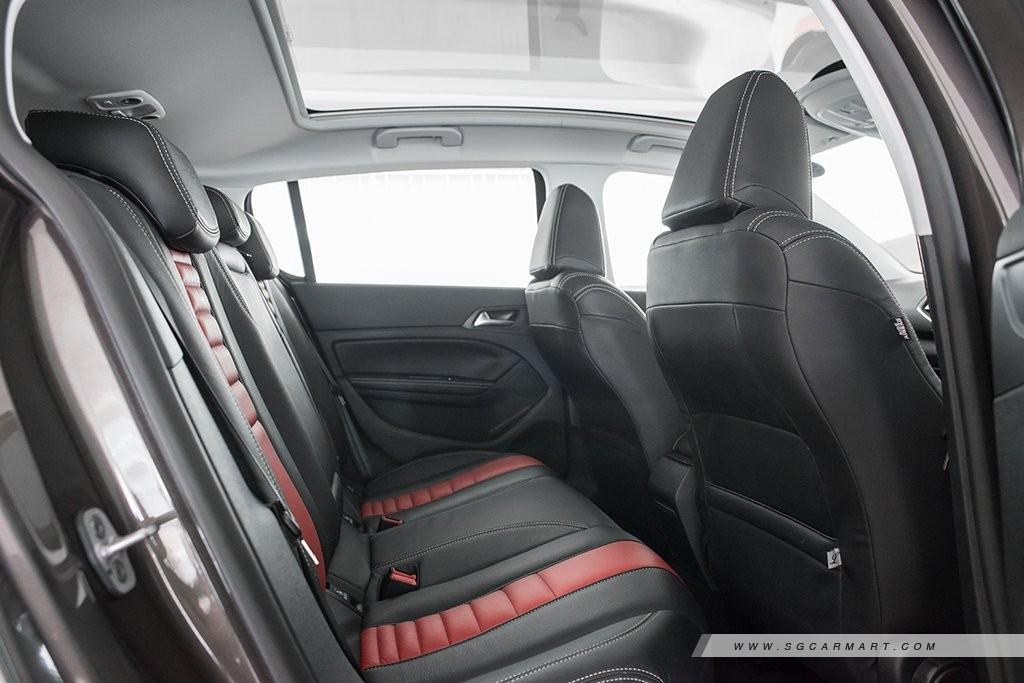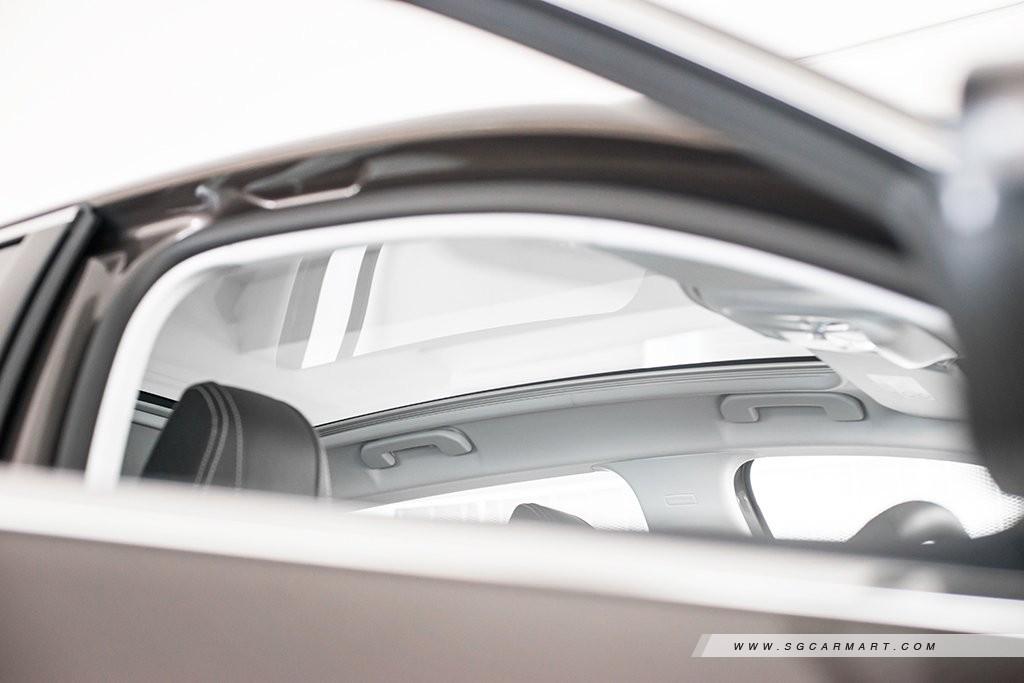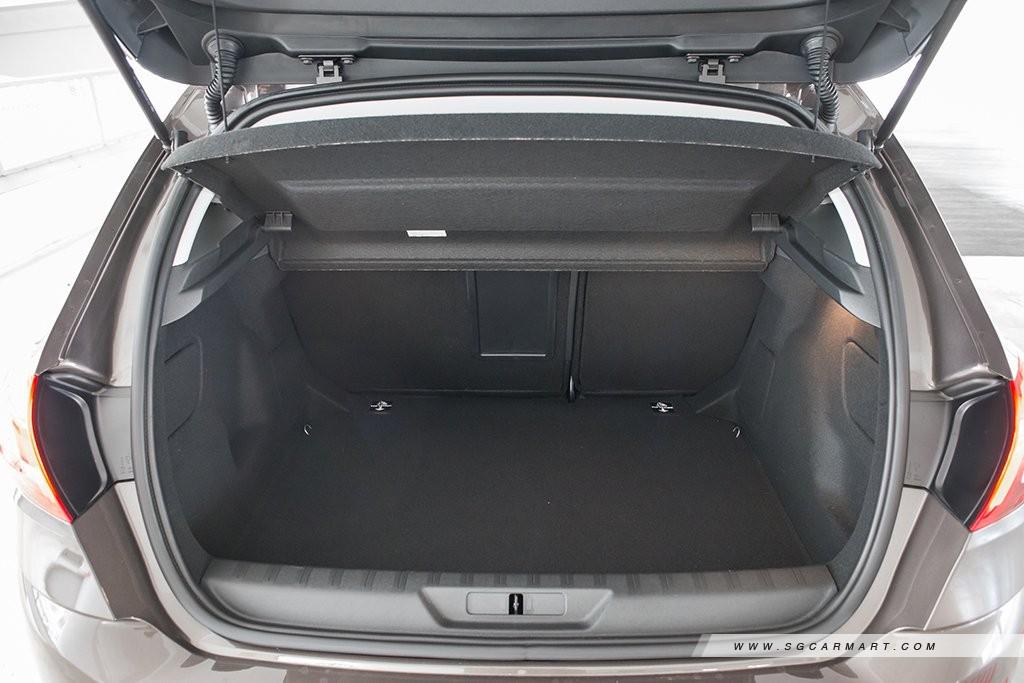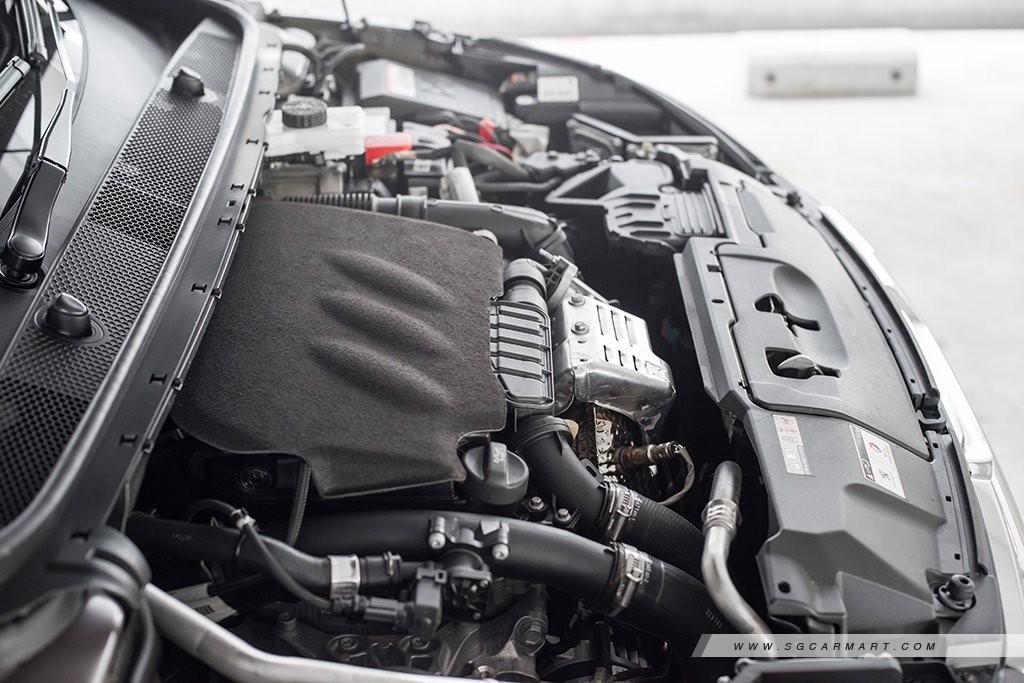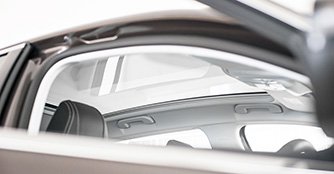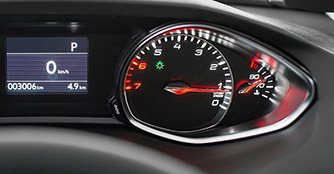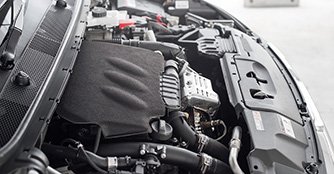Peugeot 308 1.2 PureTech EAT6 Allure (A) Review
02 Mar 2015|42,775 views
Being on a roll is defined as having a successful or lucky period. Such is the case with French carmaker Peugeot.
After a decade or two of largely undistinguished cars, the company has given the world the sassy 208, the sexy RCZ, and the sensible 2008. Moving on from its '2' series, Peugeot has introduced the second generation Peugeot 308 that looks to continue the rejuvenation with its recent European Car of the Year award.
The car is built on the Efficient Modular Platform 2 (EMP2) platform, which is capable of providing a foundation for a cabriolet, coupe, hatchback, MPV, stationwagon and SUV. It is also the first new Pug to benefit from this advanced architecture and many future Peugeot vehicles will be underpinned by this infrastructure.
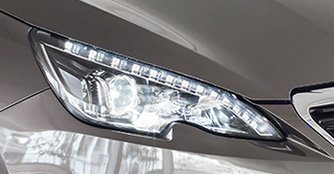
Exterior
We must say that the new 308 is arguably one of the best-looking cars in its class. The sheet metal of the car speaks a completely different design language to the previous generation.
Somehow or rather, it has dropped the quirky style the French are renowned for - something that may upset some French design purists but is likely to appeal to a far broader segment of the market.
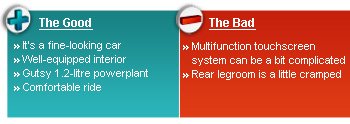 |
Taking cues from the 208 and 2008, the new car displays a more upright stance with plenty of neat details dotted around the exterior. One of these is the new slim and distinctive head light design that enforces the new signature look for Peugeot.
Measuring 4,253mm x 1,804mm x 1,472mm (L x W x H), the car is 23mm shorter, 17mm narrower and 119mm lower than the bloated predecessor it replaces.
Despite being more dimunitive, there is an added air of aggression to the car's stance, thanks to its chunky swage line, bulging wheel arches and small rear light clusters that mimic a cat's claws.
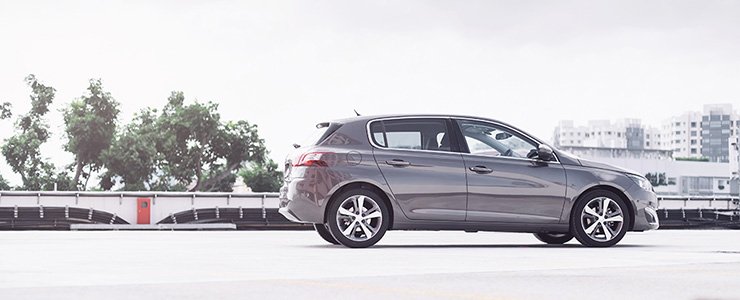 |
Interior
Minimalism is the focus inside this new car, with the introduction of a new 9.7-inch multifunction touchscreen system. Thanks to this new addition, there is now a sleek look to the centre console that is almost entirely devoid of buttons.
However, conducting simple actions such as altering the air-conditioning temperature can be a little time-consuming due to the complex nature of the sub-menus on the infotainment system.
Like the smaller 208, the new 308 also adopts Peugeot's small steering wheel that has a quality feel to it. In fact, this quality characteristic is prevalent throughout the interior with a solid finish and tactile materials.
As seen previously in the smaller hatchback, the instrument panel sits high on the dash but this setup also means the dials can be obscured by the wheel for some drivers (no problem for us).
While access to the rear seats is better than some of its rivals thanks to a wider door access, the legroom in the back can get a little squeezy.
Nonetheless, the slightly cramped quarters means that the boot capacity swells to an impressive 470 litres - 90 litres more than a Volkswagen Golf and 40 litres more than its predecessor.
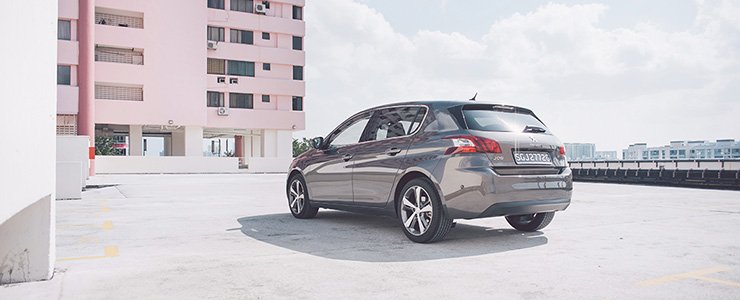 |
The Drive
The Peugeot 308 here is fitted with the smallest capacity engine in the range - a 1.2-litre PureTech turbocharged three-cylinder powerplant.
It feels like a much bigger engine than it really is, pulling extremely well from low in the rev range and hustling the Pug along much more rapidly in reality than the official 0-100km/h time of 10.7 seconds.
Paired with Peugeot's new six-speed Efficient Automatic Transmission (EAT6), there is smooth and linear power delivery as well as a pretty rorty sound that is familiar among three-pot lumps.
More importantly, the engine boasts strong efficiency. Although we weren't able to get anywhere near the claimed figure of 19.2km/L, we managed a respectable 13km/L during our time with the car.
On the whole, the new 308 promises sharper dynamics, with decent turn-in and agility in corners. Despite being quite good fun to drive, Peugeot focused on making the car comfortable. As a result, it has a suspension setup that provides a good balance of handling and comfort.
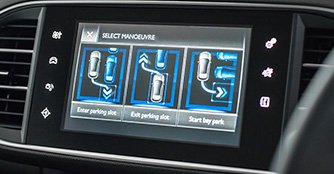
Conclusion
The Peugeot 308 has undergone a radical transformation from a dull car to something hatchback-seeking buyers will happily consider.
This latest offering by the French brand is outstanding in many ways - from its modern sleek styling to its well-balanced ride and handling. This paves the way for the rest of the Pugs to follow and is enough to see Peugeot being on a roll for years to come.
Being on a roll is defined as having a successful or lucky period. Such is the case with French carmaker Peugeot.
After a decade or two of largely undistinguished cars, the company has given the world the sassy 208, the sexy RCZ, and the sensible 2008. Moving on from its '2' series, Peugeot has introduced the second generation Peugeot 308 that looks to continue the rejuvenation with its recent European Car of the Year award.
The car is built on the Efficient Modular Platform 2 (EMP2) platform, which is capable of providing a foundation for a cabriolet, coupe, hatchback, MPV, stationwagon and SUV. It is also the first new Pug to benefit from this advanced architecture and many future Peugeot vehicles will be underpinned by this infrastructure.
Exterior
We must say that the new 308 is arguably one of the best-looking cars in its class. The sheet metal of the car speaks a completely different design language to the previous generation.
Somehow or rather, it has dropped the quirky style the French are renowned for - something that may upset some French design purists but is likely to appeal to a far broader segment of the market.
Taking cues from the 208 and 2008, the new car displays a more upright stance with plenty of neat details dotted around the exterior. One of these is the new slim and distinctive head light design that enforces the new signature look for Peugeot.
Measuring 4,253mm x 1,804mm x 1,472mm (L x W x H), the car is 23mm shorter, 17mm narrower and 119mm lower than the bloated predecessor it replaces.
Despite being more dimunitive, there is an added air of aggression to the car's stance, thanks to its chunky swage line, bulging wheel arches and small rear light clusters that mimic a cat's claws.
Interior
Minimalism is the focus inside this new car, with the introduction of a new 9.7-inch multifunction touchscreen system. Thanks to this new addition, there is now a sleek look to the centre console that is almost entirely devoid of buttons.
However, conducting simple actions such as altering the air-conditioning temperature can be a little time-consuming due to the complex nature of the sub-menus on the infotainment system.
Like the smaller 208, the new 308 also adopts Peugeot's small steering wheel that has a quality feel to it. In fact, this quality characteristic is prevalent throughout the interior with a solid finish and tactile materials.
Minimalism is the focus inside this new car, with the introduction of a new 9.7-inch multifunction touchscreen system. Thanks to this new addition, there is now a sleek look to the centre console that is almost entirely devoid of buttons.
However, conducting simple actions such as altering the air-conditioning temperature can be a little time-consuming due to the complex nature of the sub-menus on the infotainment system.
Like the smaller 208, the new 308 also adopts Peugeot's small steering wheel that has a quality feel to it. In fact, this quality characteristic is prevalent throughout the interior with a solid finish and tactile materials.
As seen previously in the smaller hatchback, the instrument panel sits high on the dash but this setup also means the dials can be obscured by the wheel for some drivers (no problem for us).
While access to the rear seats is better than some of its rivals thanks to a wider door access, the legroom in the back can get a little squeezy.
Nonetheless, the slightly cramped quarters means that the boot capacity swells to an impressive 470 litres - 90 litres more than a Volkswagen Golf and 40 litres more than its predecessor.
The Drive
The Peugeot 308 here is fitted with the smallest capacity engine in the range - a 1.2-litre PureTech turbocharged three-cylinder powerplant.
It feels like a much bigger engine than it really is, pulling extremely well from low in the rev range and hustling the Pug along much more rapidly in reality than the official 0-100km/h time of 10.7 seconds.
Paired with Peugeot's new six-speed Efficient Automatic Transmission (EAT6), there is smooth and linear power delivery as well as a pretty rorty sound that is familiar among three-pot lumps.
More importantly, the engine boasts strong efficiency. Although we weren't able to get anywhere near the claimed figure of 19.2km/L, we managed a respectable 13km/L during our time with the car.
The Peugeot 308 here is fitted with the smallest capacity engine in the range - a 1.2-litre PureTech turbocharged three-cylinder powerplant.
It feels like a much bigger engine than it really is, pulling extremely well from low in the rev range and hustling the Pug along much more rapidly in reality than the official 0-100km/h time of 10.7 seconds.
Paired with Peugeot's new six-speed Efficient Automatic Transmission (EAT6), there is smooth and linear power delivery as well as a pretty rorty sound that is familiar among three-pot lumps.
More importantly, the engine boasts strong efficiency. Although we weren't able to get anywhere near the claimed figure of 19.2km/L, we managed a respectable 13km/L during our time with the car.
On the whole, the new 308 promises sharper dynamics, with decent turn-in and agility in corners. Despite being quite good fun to drive, Peugeot focused on making the car comfortable. As a result, it has a suspension setup that provides a good balance of handling and comfort.
Conclusion
The Peugeot 308 has undergone a radical transformation from a dull car to something hatchback-seeking buyers will happily consider.
This latest offering by the French brand is outstanding in many ways - from its modern sleek styling to its well-balanced ride and handling. This paves the way for the rest of the Pugs to follow and is enough to see Peugeot being on a roll for years to come.
Also read our comparison article on:
Ford Focus Hatchback vs Nissan Pulsar vs Peugeot 308Car Information
Peugeot 308 1.2 PureTech EAT6 Allure 17" (A)
CAT A|Petrol|19.2km/L
Horsepower
96kW (129 bhp)
Torque
230 Nm
Acceleration
10.7sec (0-100km /hr)
This model is no longer being sold by local distributor
All Used Peugeot 308Thank You For Your Subscription.
